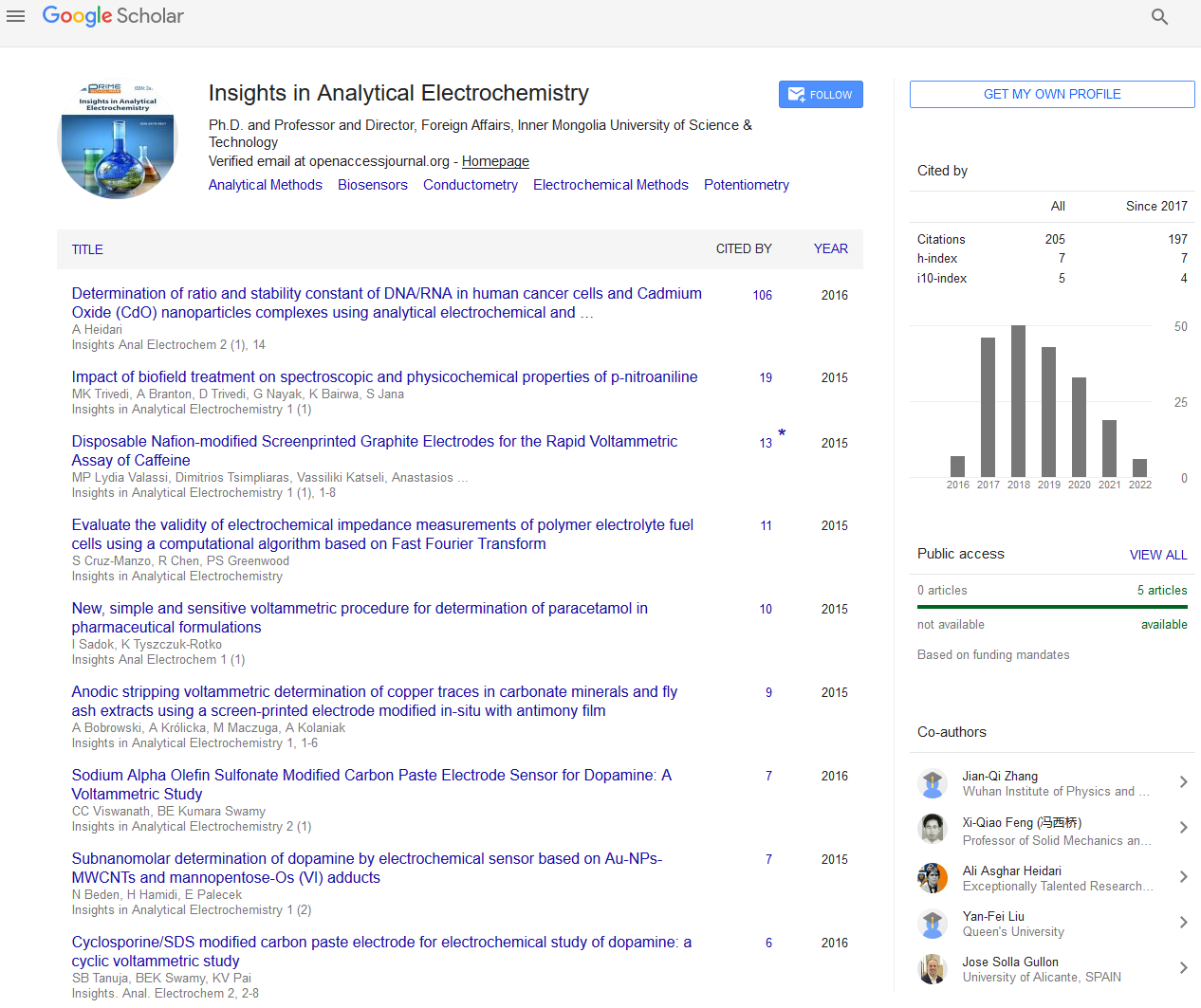Commentary - (2022) Volume 8, Issue 5
Calibration of Electrochemical Sensors Tends Proportional
Mingwei Yang*
Department of Applied Chemistry, Fujian Agriculture and Forestry University, China
*Correspondence:
Mingwei Yang,
Department of Applied Chemistry, Fujian Agriculture and Forestry University,
China,
Email:
Received: 31-Aug-2022, Manuscript No. IPAEI-22-14741 ;
Editor assigned: 02-Sep-2022, Pre QC No. IPAEI-22-14741(PQ) ;
Reviewed: 16-Sep-2022, QC No. IPAEI-22-14741 ;
Revised: 21-Sep-2022, Manuscript No. IPAEI-22-14741(R) ;
Published:
28-Sep-2022, DOI: 10.21767/2470-9867.22.8.23
Description
An electrical signal that is proportional to the gas concentration
is produced when an electrochemical sensor reacts with the gas
of interest. The sensor works by allowing charged molecules to
pass through a thin layer of electrolyte. It has two electrodes
a working electrode and a counter electrode. The amount of
target gas that is oxidized at the working electrode controls the
magnitude of the current. Typically, sensors are constructed so
that diffusion limits the supply of gas, resulting in a linear relationship
between the sensor’s output and gas concentration.
Electrochemical sensors outperform other sensor technologies,
like infrared, whose output must be linearized before they
can be used, thanks to their linear output. Low concentrations
can be measured with greater precision and calibration is much
simpler with a linear output because all that is required is a
baseline and one point. Dispersion control offers another benefit.
The sensor manufacturer can tailor the sensor to a specific
target gas concentration range by changing the diffusion barrier.
Additionally, electrochemical sensor-based instruments require
significantly less upkeep than some other detection technologies
due to the fact that the diffusion barrier is primarily
mechanical. As a result, the calibration of electrochemical sensors
tends to be more stable over time. Although experimental
errors in measuring the diffusion properties make the calculation
less accurate than calibrating with test gas, the sensitivity
can theoretically be calculated using the diffusion properties
of the gas path into the sensor. A current of electrons flows
between the working electrode and counter electrode as a result
of this reaction. Electrons are transferred from the counter
electrode to the working electrode in an oxidation reaction,
while electrons are transferred from the counter electrode to the working electrode in a reduction reaction. Regardless, the
electrical flow created is relative to the grouping of the objective
gas. In order to provide the user with a reading in either
part per million (PPM) or percentage volumes, this current is
amplified and processed in accordance with the calibration.
The majority of electrochemical sensors give a reading of zero
if no target gas is found. However, the sensor necessitates a
balance or zero adjustment; in contrast to catalytic bead sensors.
Most electrochemical sensors have some cross-sensitivity,
even though they are designed to identify a particular gas.
This phenomenon is the sensor’s response to gases other than
the target gas, usually because the non-target gas has a higher
chemical reactivity than the target gas. The non-target gas may
at times obscure the presence of the target gas. To reduce the
impact of cross-sensitivity on reading accuracy, it is essential to
use filters and bias voltage during operations for these reasons.
Temperature is inversely proportional to the rates of the chemical
processes that electrochemical sensors rely on. As a result,
changes in temperature can have an effect on how well sensors
work. Temperature compensation in some form is recommended
for improved reading accuracy across a wider range
of environmental conditions. The operation of electrochemical
sensors is based on the diffusion of the gas of interest into the
sensor, which produces an electrical signal proportional to the
gas concentration.
Acknowledgement
None.
Conflict of Interest
The author’s declared that they have no conflict of interest.
Citation: Yang M (2022) Calibration of Electrochemical Sensors Tends Proportional. Insights Anal Electrochem. 8:23.
Copyright: © 2022 Yang M. This is an open-access article distributed under the terms of the Creative Commons Attribution License,
which permits unrestricted use, distribution, and reproduction in any medium, provided the original author and source
are credited.

